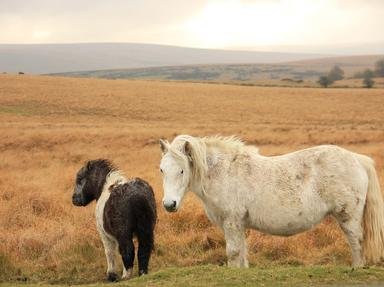Quiz Answer Key and Fun Facts
1. Felix heads out of his cat flap and into the back garden. It's a lovely sunny spring day, and as Felix heads for his favourite blackbird hunting spot, he is rudely disturbed by a buzzing Bombus horturum! This common bumblebee is characterised by the two bands of yellow hair on its thorax. What is the common name of this noisy insect?
2. After Felix gets his composure back (he had an unpleasant flashback of accidentally stepping on a bumblebee when he was just a kitten), he pads over to the brambles and in the soil spots a wriggling annelid that birds find especially delicious! The most common species of this invertebrate is Lumbricus terrestris. What has Felix just seen?
3. Treading carefully through the brambles (an excellent plant for your wildlife garden, by the way!), Felix hears high-pitched tweeting close by and spots a small bird in the tree above him. The blue cap and yellow breast mark this attractive and frequent garden visitor out. What is this resident (present all year round) bird?
4. Felix knew better than to climb the tree (he's not having the indignity of a fireman rescuing him again!), so he continues on and slinks behind a hawthorn shrub. In his haste, Felix fails to avoid stepping in the slime trail produced by a mollusc loathed by many gardeners due to its preference for eating vegetables. The scientific name of this ponderous snail is generally agreed as Cornu aspersum, but is sometimes named as Helix aspersa (especially in Britain). What is the common name of this lamented animal?
5. Felix isn't having the greatest of days. Lots of hard work hunting and nothing to show for it, except a slimy paw. Still, the presence of a beautiful butterfly basking on a nearby buddleia bush cheers him up a little. This common garden butterfly is characterised by orange and black colouring, with a row of blue crescents around the edges of the wings. Its scientific name is Aglais urticae. What is the common name of this rather fetching butterfly?
6. Felix slopes back into the shrubs in search of the elusive blackbird, and suddenly hears a rustle behind him. Springing swiftly around, Felix is hopeful of finally coming face to face with his nemesis, but instead sees the rear end of a startled amphibian jumping away from him. Felix chases him to the pond next door, and with a splash, the smooth-skinned amphibian just escapes! Going by the scientific name Rana temporaria, what is this croaky animal?
7. Felix is now getting rather frustrated and looks up to see a grey squirrel scarpering up a nearby birch tree, seemingly oblivious to Felix's troubles. Which of the following statements about the grey squirrel is TRUE?
8. Felix continues on and returns to the bramble bushes in his owner's garden. He comes across another cat who he hisses at aggressively. How dare they hunt in his garden! Felix shouldn't be surprised however, as there are around eight million domesticated cats in the UK (according to the Pet Population 2014 survey of UK households). Can you tell me the scientific name of the domestic cat?
9. After a brief pit-stop for some much needed cat food, Felix returns to the garden and spots the delightful 'Macroglossum stellatarum' drinking nectar from a nearby honeysuckle plant. Felix could easily mistake this insect for a hovering bird, such is its behaviour. What common name does this moth go by?
10. A loud and prolonged rustling noise coming from the bramble bushes distracts Felix from looking at the moth, and he bounds over to investigate. He pads carefully, and spots a bird. Black plumage, yellow eye-ring, and an orange bill! Finally, a blackbird! Felix has spotted a very nice example of an adult male blackbird. With what scientific name is the blackbird identified by?
Source: Author
X_JELLYFISH_X
This quiz was reviewed by FunTrivia editor
Tizzabelle before going online.
Any errors found in FunTrivia content are routinely corrected through our feedback system.

